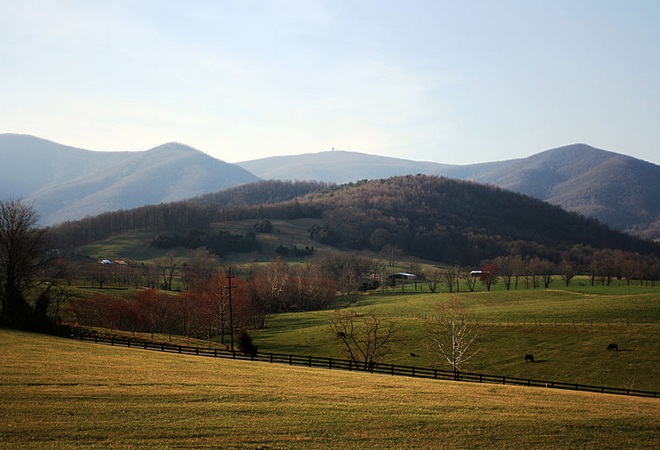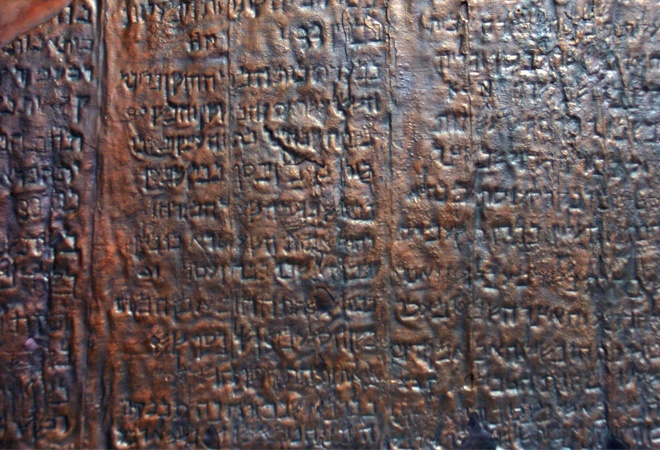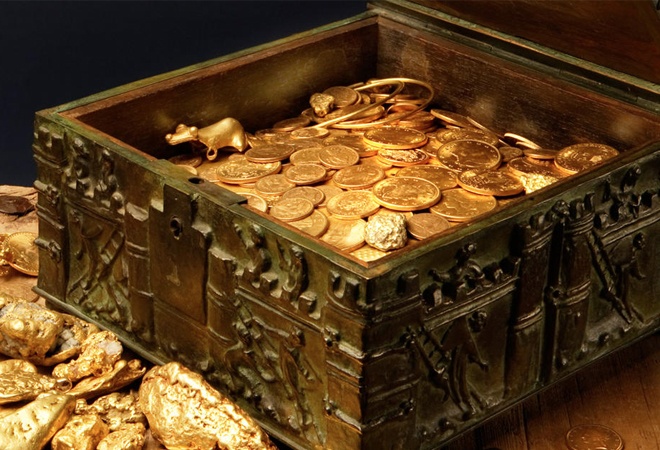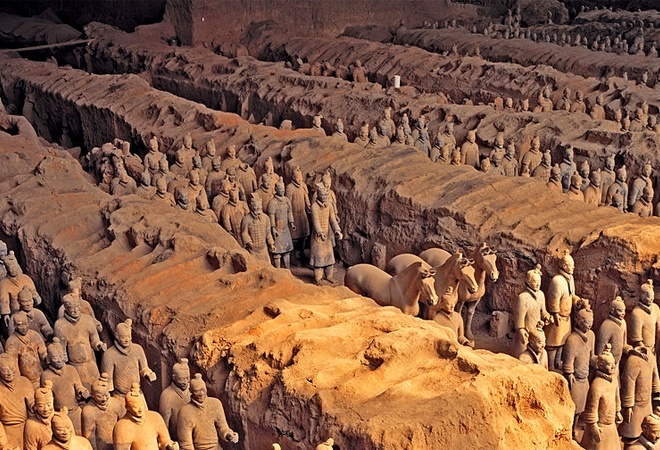Real-world treasure hunting isn’t limited to the movies. There are enough local legends, ancient texts, and conspiratorial histories out there that it’s surprising someone isn’t tripping over a hidden chest of emeralds every other day. The mere thought of discovering a chest filled with gold, jewels, or ancient artifacts has captivated the human imagination for centuries, and our current era is no exception. Thankfully, there are still real-world treasure hunts out there that are potentially going to make one lucky treasure hunter rich beyond their wildest dreams. Early retirement is only a metal detector and shovel away.

Captain Kidd’s Treasure
The Goonies was a big inspiration for this article. The cliché of buried pirate treasure is something you think about no matter how old you are or how remote the possibility is that anyone like One-Eyed Willie existed. Turns out the answer is yes, and his treasure’s in New Jersey (probably).
Captain Kidd was a notorious pirate who sailed the seas in the late 17th century. He was eventually captured and hanged for piracy, but rumors persist that he buried some of his treasure before his arrest.
One of the most famous locations for Captain Kidd’s treasure is Cliffwood Beach in New Jersey. The story goes that Kidd buried his treasure on the beach between two large elm trees, which were known as “Kidd’s Rangers.” The trees were used as markers to help Kidd find his treasure again.
Over the years, there have been many attempts to find Captain Kidd’s treasure at Cliffwood Beach. Some people have even claimed to have found small amounts of gold and silver, but there has never been any major discovery.
The legend of Captain Kidd’s treasure at Cliffwood Beach continues to fascinate people today. There are still people who occasionally go treasure hunting on the beach, hoping to find the elusive treasure.
If this inspires you to go out treasure hunting for yourself, know that the two elm trees that were used as markers for the treasure were located at the mouth of Matawan Creek and on Fox Hill. Both trees have since been destroyed, but the location of the treasure is still said to be somewhere between these two points. Also, in addition to gold and silver, the treasure is also said to contain jewels, pearls, and other valuables.
Inspiration From Treasure Hunting Movies: The Lost Ship in the Desert
One of the world’s most criminally underrated movies is Sahara, which centers on searching for a lost ship in the dessert. A real-world ship filled with treasure may not be in the Sahara (emphasis on may), but another desert could: the Salton Sea Basin in California.
There’s too much to this one to be entirely false. Claims of seeing a sea-faring vessel stranded in the Salton Sea Basin have been repeated by Native Americans, Spanish explorers, regular explorers, migrants, and treasure hunters for centuries. Generally, that diverse a group of people don’t agree on something unless there’s some truth to it.
As the story goes, a Spanish vessel sailed up into the Salton Sea riding a tidal bore, or a surge of water that moves against a river’s normal flow. When they went to return the way they came, the waters had receded back over the natural dam, leaving the vessel stranded in the sea. This happened as recently as 1922, and would still be happening if people hadn’t completely drained the river.
There’s the added support that the Los Angeles Star reported the ship as found in December, 1870, as the result of an expedition by Charley Clusker. Although Clusker also disappeared when he set out on a return journey, that initial report is a positive affirmation that the ship exists.
In another story, a traveler who came upon the ship one night found pearls beyond imagination. He filled his pockets and sped to the local mission. The traveler wasn’t able to find the ship again, but his conviction was enough that he spent his whole life trying. While that might not be as reliable a source as the Star, it’s enticing nonetheless.
A quick note; most accounts agree the ship is Spanish, though other, less likely explanations point to King Solomon’s navy, one of the lost tribes of Israel, sailors from the Indian Ocean, or a roving band of pirates. No matter what this ship is, its recorded discovery would be enough to net you millions in notoriety, book, and movie deals.
Forrest Fenn’s Treasure
This treasure hunt follows the template for a Hollywood kids’ movie. It’s some kind of chest, hidden in the wilderness, with any clues for its location coming primarily from a purposefully obscure poem. There’s almost too much cliché here to be true, but people’s confidence in its existence seems unshakable, especially since Forrest Fenn is still alive and told CBS about the treasure.
What we know about the location isn’t much at all. It’s in the Rockies in Montana, Wyoming, Colorado, or New Mexico. So yeah, that rules out most of the states, but the ones that are left are pretty big. Also, it’s not in a mine, which is helpful but also not.
Fenn says there are 265 gold coins and hundreds of gold nuggets. The chest’s precise worth isn’t known, since Fenn is the only one who knows exactly what’s inside. The contents come from Fenn’s career as a collector of antique artifacts (not all found through treasure hunting), so not only is this a treasure worth millions, but this is a treasure worth millions hidden by a guy who knows what he’s talking about.
The motivation behind hiding the treasure was about as altruistic as they come, Fenn mostly being motivated by his own enjoyment of collecting. He hopes the treasure is found by a family who has gone looking multiple times, making the search more of a family bonding experience than a quest for gold and glory. That’s about as heartwarming as these things get. Most of the other stories we hear are about doomed ships, cursed pirates, and blood-soaked battlefields.

The Beale Ciphers
While widely derided as a hoax, some haven’t given up on the childlike wonder at the possibility of decoding a 150-year-old mystery.
The Beale Ciphers were three coded messages found in a box that originally belonged to Thomas J. Beale and supposedly referred to a treasure Beale discovered in a mine north of Santa Fe. Beale and his companions moved the treasure to Bedford County, Virginia, where Beale gave Robert Morriss, trusted friend and local innkeeper, a box to be opened if Morriss didn’t hear from Beale for a decade.
Two decades later, because Morriss was either a bad friend or waited an extra decade for each extra s in his name, he opened the box. When he and a friend couldn’t decipher the papers inside, only figuring out the one about the contents of the treasure, they published “The Beale Papers.” It was a pamphlet aimed to spread news of the treasure as far as possible, basically crowdsourcing the deciphering.
The ciphertexts have been the subject of much speculation and debate, and many people have tried to decode them. However, no one has yet been able to successfully decipher the full text of the ciphers.
The Beale Papers have been the subject of numerous books, articles, and websites. There have also been several attempts to locate the treasure, but all of these attempts have been unsuccessful. The treasure is still considered to be one of the greatest unsolved mysteries in American history.Today, even the NSA has a section of its website dedicated to the veracity of the claims in the Beale Papers.

Copper Scroll
The Copper Scroll is one of the Dead Sea Scrolls. It was found in 1952 and was one of the only scrolls that was found where it was originally hidden. When archaeologists finally got it unrolled and translated, they realized the scroll wasn’t a lost religious text, like the others, but was a list of ancient treasure. Gold and silver quantities and locations were recorded, making this one of the most straightforward treasure retrievals in history.
That is, it would have been, if they could properly translate it. The scroll, like the other Dead Sea Scrolls, was written in Ancient Hebrew, but since most of our knowledge of Ancient Hebrew comes from religious texts, and this scroll wasn’t religious, there are quite a few words that people have no way of translating. So what should have been a point and dig operation quickly became a frustrating exercise in futility.
For example, one of the more complete sentences from the scroll is this: “In the Second Enclosure, in the underground passage that looks east.” Which is common knowledge for someone who lived 2,000 years ago, but is basically useless to us now. It’s like giving directions to somewhere based on Funcoland locations. That works great in the early 2000s, but every day there are less and less people who remember.
The Tomb of Qin Shi Huang
Full disclosure: Many treasures have already been found in Qin Shi Huang’s tomb. But there’s still the possibility of plenty more–and people know exactly where to find it (probably). About 2,200 hundred years ago, Qin Shi Huang unified the different warring factions of China and declared himself the first Chinese emperor. From there he got super rich and died.
After he died, he was buried in a city-sized underground cavern complex filled with clay reproductions of all the concubines, armies, bureaucrats, and servants he could possibly need in the afterlife. If you’ve seen the terracotta soldiers the History Channel loves to fantasize about, you’ve seen the population of Huang’s tomb.
The major hurdle left for the excavation is how to deal with the reported river of mercury around Huang’s tomb. If that was a set piece in a movie, people would dismiss it as ridiculous, yet that’s exactly what archaeologists expect to find. All they have to do is figure out how to not have it poison the area’s water supply.
This is an archaeological project that’s been going on in some form or another since the 1970s and no one expects it to be ending any time soon. As far as legitimate, lucrative tomb raiding goes, this is the project you want to get in on. Link







